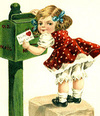
Allergy Lifeline RoadmapAllergy Lifeline Homewith links to my other websites
Allergy Lifeline Guestbook or Read Entries  Share your own holistic health story with me by email. Click on the mailbox on the right. Share your own holistic health story with me by email. Click on the mailbox on the right.
Webmaster's Bio
More on Edible & Potable Plants
Learn how to eat the most delicious part of the plant, the flower. Herbs with sedative properties and what you should know about them before you use them.
Don't fight the dandelions, drink them.
Don't fight the dandelions, use them as medicine
Don't fight the dandelions, enjoy them
Benign Breast Lumps
Garlic, Wonder Food
Herb Teas from My Garden
Taraxacum officinale at Plants for a Future
Dandelion
|
Don't fight the dandelions, drink them.by Traute Klein, biogardener
Dandelions make the most delicious coffee substitute as well as a wine which is as potent as most hard liquors. Second article in the series on dandelions.
Series on Dandelions
Are you addicted to coffee?
Make your own dandelion coffee.
 One year here in Canada, we made our own dandelion coffee. We had a lot of healthy dandelion roots from a field which had just been converted into gardens. It takes a lot of dandelion roots to make the exercise worthwhile. Endive roots, however, can be used in place of dandelion roots. They are larger and mature is one single growing season, whereas dandelions require several years to make the harvest worthwhile. The taste is the same. One year here in Canada, we made our own dandelion coffee. We had a lot of healthy dandelion roots from a field which had just been converted into gardens. It takes a lot of dandelion roots to make the exercise worthwhile. Endive roots, however, can be used in place of dandelion roots. They are larger and mature is one single growing season, whereas dandelions require several years to make the harvest worthwhile. The taste is the same.
That is how I remember the dry barley being roasted, in a cast iron pan.
Dandelion Moonshine
 What else can you do with dandelions? Well, you can make wine with it. Mind you, the wine uses so much sugar that the medicinal value of the remedy appears suspect. If, however, you are going to consume liquor anyway, it might as well contain some beneficial nutrients. I must admit that I have never made dandelion wine, but I have tasted it at a Hutterite colony in southern Manitoba. After the tiniest sip, I decided that I did not want to finish my shot-glass. It tasted like hard liquor, and just the thought of hard liquor turns my stomach. In my childhood, we had to swallow a mouthful of Schnaps whenever we had an upset stomach. Ever since then, every time I taste hard liquor, I remember the upset stomachs of my childhood. What else can you do with dandelions? Well, you can make wine with it. Mind you, the wine uses so much sugar that the medicinal value of the remedy appears suspect. If, however, you are going to consume liquor anyway, it might as well contain some beneficial nutrients. I must admit that I have never made dandelion wine, but I have tasted it at a Hutterite colony in southern Manitoba. After the tiniest sip, I decided that I did not want to finish my shot-glass. It tasted like hard liquor, and just the thought of hard liquor turns my stomach. In my childhood, we had to swallow a mouthful of Schnaps whenever we had an upset stomach. Ever since then, every time I taste hard liquor, I remember the upset stomachs of my childhood.Here is a dandelion wine recipe for those of you adventurous enough to try it. The site is linked below. It also has other dandelion recipes. I have changed the text somewhat but not the contents.
Dandelion Wine RecipeThis is what you will need:
Directions:
I prefer to use screw-top wine bottles. They are more convenient and just as good. All I can say now is "Prosit!" or "To your health!"
|
The material on this site may be reproduced or republished only by special arrangement with the webmaster.
You are, however, welcome to pass on or link the URL.
